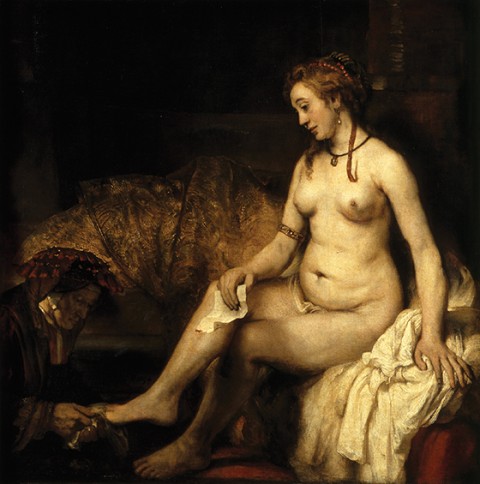Bathsheba with King David’s Letter, by Rembrandt van Rijn (1606–1669)

One reading of the story of David and Bathsheba depicts their encounter as a tryst between consenting adults or perhaps even as the result of Bathsheba’s plan to seduce David. Much of the history of art supports this reading. A nude or partially nude Bathsheba proves too much of a temptation for King David, who watches her from his palace. Recent biblical scholarship, however, has called this interpretation into question. Bathsheba is not a willing participant in an affair, much less a seductive femme fatale; rather, she is as an unwilling victim of unwelcome sexual advances and assault. Details of the text support this reading. Although it is spring and time for kings to go to war, David has chosen to remain behind (1 Sam. 11:1), a fact unknown to Bathsheba. David is in control. He is the subject of most of the verbs: David inquires about Bathsheba, he sends for her and “lays with her.” Rembrandt’s Bathsheba reflects the traditional reading, while also subtly challenging it. David (often shown watching from a tower or roof in earlier art) is absent from the scene, but Bathsheba is still objectified: David’s gaze has been replaced by the voyeuristic viewer. But Bathsheba holds a letter from the king (a detail missing from the biblical account), presumably demanding her presence at his palace. As a servant dries her feet, Bathsheba muses over the king’s “request.” He is, after all, the king, and what choice does Bathsheba have?




